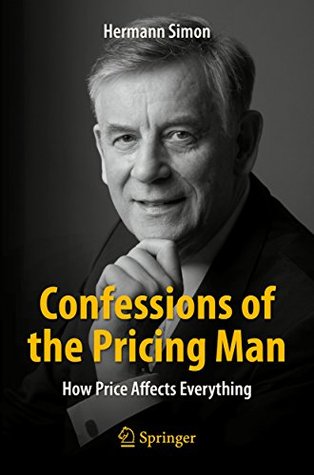More on this book
Community
Kindle Notes & Highlights
Read between
October 6 - October 26, 2019
We are all reluctant to part with what we have.
The odds that you go to the concert despite the weather are much greater if you paid for the ticket with your own money than if you had received the ticket as a gift.
“sunk costs .”
Prospect theory tells us that it is harder for us to part with cash than to pay via credit card, because the negative utility from a cash payment is greater.
It is particularly advisable for people with limited financial means to use cash payments as a control mechanism.
credit card payments are a way of postponing the actual separation from our money.
We also don’t “feel” the payment as much, because we don’t have to reach into our pockets, give physical money to a cashier, and watch them put it away.
As a result the negative utility is smaller when we ...
This highlight has been truncated due to consecutive passage length restrictions.
“Cash Back” and Other Absurdities
price s which no one ever pays,
moon price
why do such moon price s make sense? There are two answers.
First, the high prices create an opportunity for price differentiation . Not all buyers receive the same discount.
The second answer stems from pro...
This highlight has been truncated due to consecutive passage length restrictions.
negotiated a large discount, which contributed in no small way to my net utility from the transaction.
Prospect theory provides concrete guidance on how to set up price structure s.
One question is the price metric , which is the unit a seller will use to express the price.
After making a payment, the customers want to “earn it back”
the theory of mental accounting,
claims that consumers allocate their transactions into different mental accounts. How easily or carefully they spend their money depends on which account the money is
Each account is subject to different spending behaviors and price sensitivities. Each account will have its own negative utility curve, according to prospect theory .
One famous experiment by Kahneman and Tversky showed the absurd effects of false mental accounting. The participants did not distinguish between costs which are relevant for their decision making and those which aren’t (such as sunk costs ).
Loss aversion, the desire to avoid or postpone losses, is a strong human trait. It helps explain why many people wait too long before getting out of stocks when their prices have gone down.34
“The perception of prices is no different than the perception of other stimuli,”
This simple revelation means that price perception triggers responses in the brain which scientists can now measure with ever-increasing precision.
Important emotions in the context of pricing are trust, value, and longing.
The most interesting finding thus far in neuro-pricing research is that price information activ...
This highlight has been truncated due to consecutive passage length restrictions.
The response is weaker, however, when the respondent only sees 16.70 and the dollar sign is omitted.
The research has also yielded insights into the influence of colors;
I would still warn you to be cautious with how freely you interpret and try to apply the findings and insights I’ve highlighted in this chapter.
A bigger concern, however, is the attempt to generalize these findings.
Behavioral economics does not yet offer a complete, unified theory.
the findings come from laboratory settings, which casts doubt on how well the findings transfer to real life.
Human beings are not as rational as classical economics claims, nor are they as irrational as some behavioral economists claim.
It means that you should take both of these research traditions into account, but proceed with caution.
Where is a company’s optimal price position?
whether a company selects a high-price or low-price positioning is one of its most fundamental strategic decisions.
The choice of the price position affects the overall business model , the product quality , branding , and the company’s innovation activities. It also determines which market segments the company will serve and what channels it will use to reach them.
One can run a successful business with either low prices or high prices; the success factors in each case, however, are very different.
Aldi ’s core strategy is simple: offer an acceptable level of quality at very competitive prices.
Three reasons explain why Aldi’s return on sales is more than double the returns of a traditional supermarket: higher efficiency , lower costs, and capital management
IKEA focuses all of its activities on achieving the maximum cost efficiencies. The company can offer such low prices because of its extremely high procurement volumes, its use of lower cost materials, and its “do-it-yourself” model under which customers pick up and assemble the furniture themselves.
the name of the game at H&M and Zara is “efficiency .” These companies do nothing unless it is absolutely required by the consumer.
capacity utilization
The flight attendants go to great lengths to make sure that passengers leave nothing behind, not even a newspaper or magazine.
While a conventional airline would need 15–20 minutes after a flight to clean the cabin, Ryanair uses that time to board passengers for the next flight.
planes generate revenue only when they are flying.
Another way in which Ryanair focuses on costs is to serve airports which usually lie outside of major city centers and thus have lower landing fees.
Ryanair is also a master at inventing and implementing surcharges,


